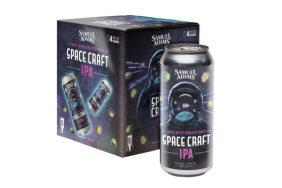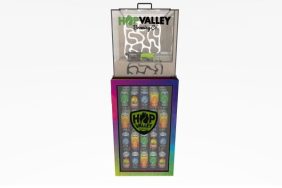Photo: Getty Images
Much of the reason craft beer is booming in the US is because people like Jim Koch tried their hands at home brewing. Koch, founder of the Boston Beer Company, is regarded as one of the pioneers of the craft beer movement. His journey began in 1984, fresh out of Harvard. He found an old family beer recipe and decided to try to make it.
The beer that would eventually become the iconic Sam Adams we all know began in Koch’s kitchen. He and thousands of other brewers began their beer odysseys by perfecting their own home brews before deciding to open breweries of their own.
How To Brew Your Own Brew
But, how does one get started home brewing? It must be extremely difficult and require a degree in chemistry or a similar field. The best way to get started is by researching and purchasing the best home brew kits, specifically a hopped malt extract kit. “These are simple kits that use a hopped barley extract. All the brewer has to do is add water and yeast, then wait,” says Josh Ratliff, Brewmaster for Mr. Beer. Most of these home brew kits can be put together in about twenty minutes, as opposed to the several hours it takes to make beer from grain. “These kits are easy for anyone to use, especially people with small apartments and not a lot of space or time, such as students.”
Extract Brewing
Once a home brewer is comfortable with how fermentation works, they usually move on to extract brewing. In this process, they will be using un-hopped malt extract. “With these kits, they can add their own bittering hops to have a little more creative control over the final flavor,” says Ratliff. The the next stage in brewing would include learning how to do a “partial mash”. “This is where the home brewer will use a malt extract as a base, but they will steep or ‘mash’ specialty grains for added flavor, body, and/or color.”
All-Grain Beer
The last step in home brewing is learning how to brew all-grain beer. “This is the ultimate in brewing as the homebrewer will have full creative control over their home brewing recipes,” says Ratliff. “While all-grain brewing is the least expensive way to brew since grains are much cheaper than malt extracts, it does have the largest startup cost due to the extra home brewing equipment involved.” It also takes about 5-8 hours to make a batch of beer rather than the 20-30 minutes it takes for a hopped malt extract kit.
Buying The Right Home Brewing Equipment
A novice home brewer will require a basic starting kit. “Most of the kits on the market, including our Mr. Beer kits include a fermenter and any hardware for it, bottling equipment, and sanitizing products,” says Ratliff. “They will also need a pot or kettle to heat water in (3qt or larger). Mr. Beer’s best selling complete kit is the Mr. Beer Craft Homebrew Classic Kit. “Not only is it our best selling kit, it’s the best selling kit in North America. It has everything needed for making beer.”
Ratliff considers their “Craft Homebrew Classic” kit to be the best starter kit money can buy. “That kit has launched many homebrewer’s careers.” He points out that many brew masters, who eventually opened their own brewery, got their start with Mr. Beer kits, affectionately know as their “Little Brown Kegs” (or “LBK”). “There are some competitors out there with decent kits, but none of them have enjoyed the success we have, especially since the 2015 Cooper’s acquisition of Mr. Beer. They make the best malt extracts in the world, so to have them making our HME kits has greatly increased the quality of our products over the past few years.”
Beer Styles For Beginners
If you decide to make your own beer, most ale styles are easier for beginners. “Pale ales, porters, stouts, IPAs, and most other ales have about the same amount of difficulty. Lagers, on the other hand, are a bit more advanced since they must be brewed at lower temps, and usually require those temps to be consistently maintained.”
The most important tip Ratliff has for brewing novices is to be patient. “Good beer can’t be made overnight.” Bad habits, like improper sanitation come from rushing. “Sanitation is the #1 most important aspect in making good beer,” says Ratliff.
It’s very important to keep in mind that you don’t make the beer. Technically, the yeast makes the beer. “You’re simply giving the yeast the best environment possible so they can do their job effectively.” If you endeavor to perform strong sanitation practices and show a lot of patience, the results will be great. With very little training, you can learn how to brew a really tasty beer, worthy of sharing with friends and family. “Good sanitation practices and lots of patience will result in great beer time after time,” says Ratliff. Also, don’t decide to make like a “mad scientist” and get all crazy with ingredients on your first few batches. “Brew a few batches of beer according to their recipe to learn how the process works. Once you feel comfortable with the process, then you can start to experiment with other recipes. As the godfather of homebrewing, Charlie Papazian, says, ‘Relax, don’t worry, have a homebrew!”
Don’t Feel Intimidated
“Home brewing shouldn’t be intimidating,” says Ratliff. “Don’t let those veteran home brewers with fancy equipment discourage you.” If you’re patient and diligent, you can make just as good beer using hopped malt extracts from a can as seasoned veterans do from grain. “If you can make mac and cheese from a box, you can easily make beer.”
You also don’t have to be a beer connoisseur to enjoy craft beer, especially craft beer you made yourself. “Don’t worry so much about a beer being ‘to style’ or within official guidelines. If it tastes good to you, then that’s all that matters.”









